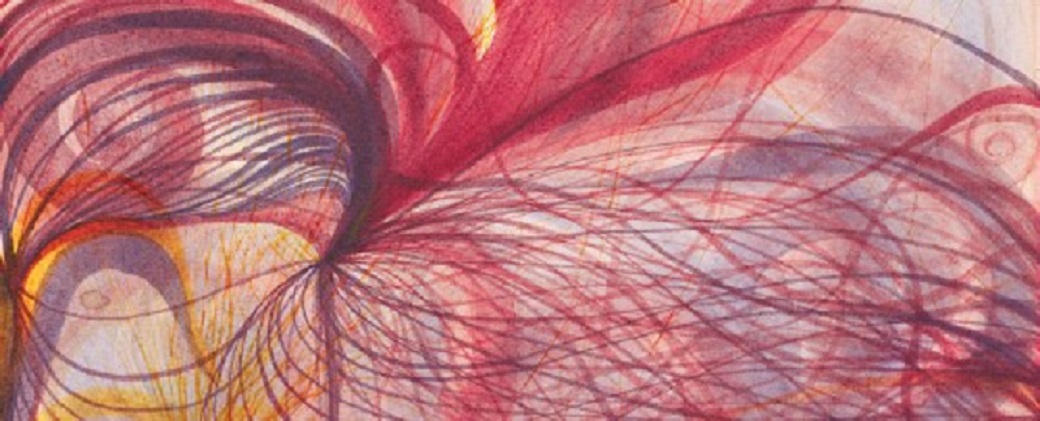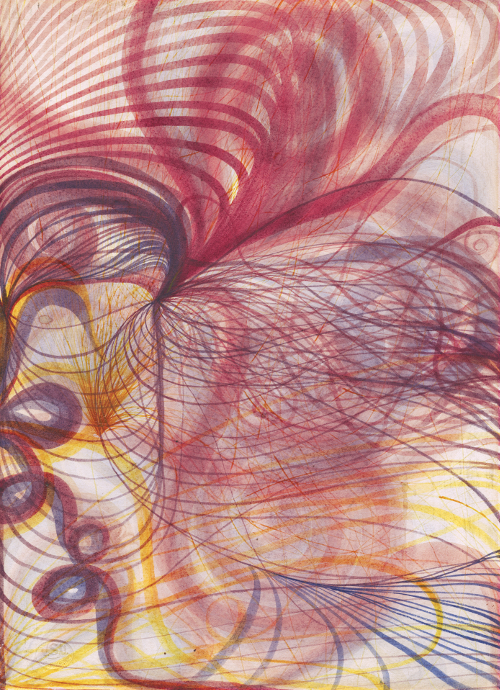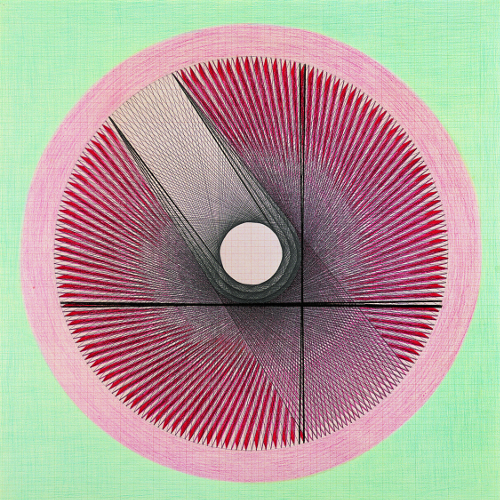It seems as if the unknown chapter of Art history is writing itself at the moment and people are queuing up to see what all the fuss is about. It was by chance that Hilma af Klint was even discovered and brought into focus in the exhibition “The Spiritual in Art: Abstract Painting 1890-1985, LACMA 1986” whose title mirrored Kandinsky’s book Über das Geistige in der Kunst [ Concerning the Spiritual In Art (1910)] while her paintings had not been seen publicly before this exhibition what it brought light was that her work from the early 20th century predated the first purely abstract painting by Wassily Kandinsky, Piet Mondrian and Kazimir Malevich, making her the a pioneer of abstract art. Then take Georgiana Hougton whose mediumistic watercolour drawings appears to have anticipated abstract art half a century prior.
‘Weltempfänger’ – which translates as ‘World Receiver’ which was the German name for a radio that is particularly suitable for the reception of shortwave radio transmitters. The title is analogous to the artistic process of the Artist involved that they are the instruments of spiritual agency. This is especially relevant to the Automatic drawings of Georgiana Houghton, and the paintings of Hilma af Klint which are now gracing the spiral halls of the Guggenheim and the therapeutic geometries of Emma Kunz based on Radiesthesia. BWH
Art of an extraordinary unknown chapter of modernism
Weltempfänger – World Receiver
LENBACHHAUS: Munich
GEORGIANA HOUGHTON – HILMA AF KLINT – EMMA KUNZ
WITH FILMS BY JOHN WHITNEY, JAMES WHITNEY AND HARRY SMITH
The exhibition Weltempfänger gives an insight into an extraordinary and largely unknown chapter of modernism: Georgiana Houghton (1814-1884) developed independently in England, Hilma af Klint (1862-1944) in Sweden and Emma Kunz (1892-1963) in Switzerland each one of their own abstract, highly charged with meaning imagery. All three wanted to make visible in their works the laws of nature, the spiritual and the supersensible; with perseverance and assertiveness, they followed their convictions.
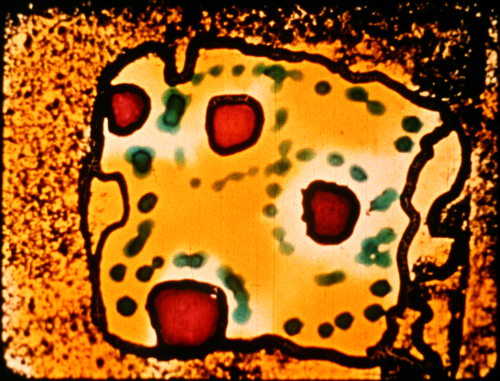
Harry Smith
Film No. 1 (A Strange Dream) (Video still), um 1946, 16 mm Film (Farbe), transferiert auf HD Digital Video, Courtesy of Anthology Film Archives, New York
Their works are accompanied by barely known films by Harry Smith (1923-1991) and the brothers John Whitney (1917-1995) and James Whitney (1921-1982). In post-war California, artists produced experimental films in which they sought a unity of different sensory perceptions. Using innovative production methods and new media such as film and computer graphics, they created abstract, esoteric imagery. For the first time, we are presenting these extremely rare works together in an exhibition.
Georgiana Houghton, Hilma af Klint and Emma Kunz explored invisible forces and the transcendental; her works shown in the exhibition are based on spiritual experiences and communication with a higher world. The three artists understood themselves as media, as recipients of messages that perhaps only they could hear and which they held in the form of works of art. In this kind of mediumistic artistic creation, the artist’s subject withdraws from his ego, gives it to the studio door, acts as a mediator between a hidden and the visible world.
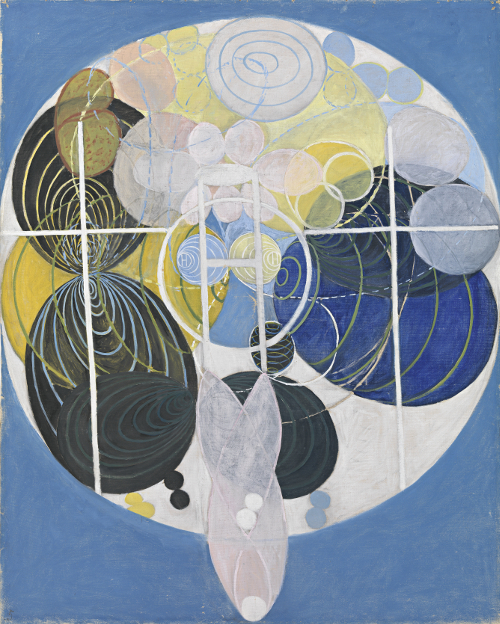
Hilma af Klint
Series WU/Rosen, Group III, No. 5, The Key to All Works to Date, 1907, Courtesy of the Hilma af Klint Foundation, Foto: Moderna Museet, Stockholm
As “world receivers”, the artists could attribute the creation of images to an external source. This gave them the freedom to overcome in their work social, cultural and aesthetic boundaries and the necessary energy to actually do so. This goes hand in hand with a delimitation of the concept of the work, which is also reflected in the work of the three filmmakers: Harry Smith described his films as abstract scores to which jazz musicians should improvise live; James Whitney understood his films as tools for meditation that can provide insights into cosmic principles; and the technical equipment John Whitney developed was closely linked to the advent of modern computer technology.
The connections between the emergence of modern abstract art in the 20th century and occult as well as esoteric ideas have long been explored. Many artists sought new means of image for spiritual, metaphysical and utopian themes and found them in abstraction. At the center of this research interest is Wassily Kandinsky, who is one of the most important artists in the inventory of the Lenbachhaus. Not only his earliest abstract pictures, but also the ideas expressed in his book On the Spiritual in Art (1912) provide an important frame of reference for this project. It is not about the – ultimately unanswerable – question, who initially painted abstract, but about the manifold modes of abstraction.Abstract art does not reflect the outer, visible reality, it is rather a communication of contents that are beyond our visual perception. Their pictorial form, if one follows Kandinsky’s view, results from an “inner necessity”.
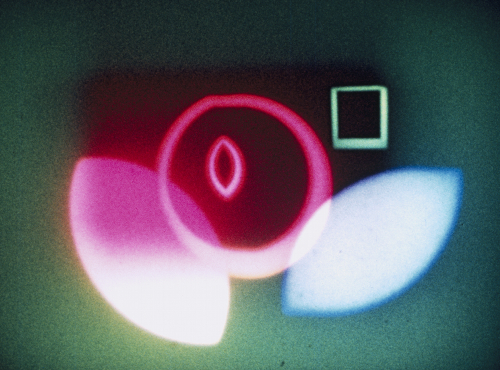
ohn und James Whitney
Five Film Exercises #1-5 (Video still), 1943-1945, 16 mm Film (Farbe, Ton) transferiert auf High Definition Digital Video © Whitney Editions, LLC
Curated by Karin Althaus and Sebastian Schneider
In collaboration with
Victorian Spiritualists’ Union, Melbourne
The Hilma af Klint Foundation, Stockholm
Emma Kunz Center, Würenlos
exhibition details : Weltempfänger exhibition LENBACHHAUS

